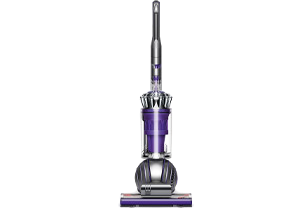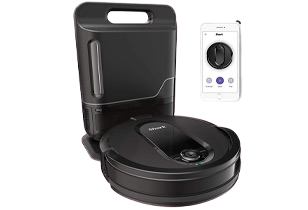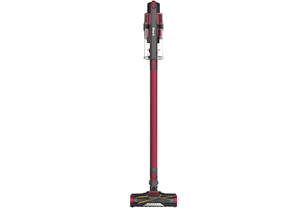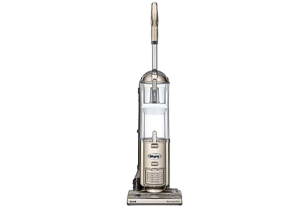Bissell CrossWave Won't Charge: A Troubleshooting Guide For Vacuum Owners (2024)
We’ve received many complaints from our readers about running into the Bissell CrossWave won’t charge issue. At ALL IN ONE Guides’s editorial, we totally understand how frustrating it can be.
After all, until the Bissell CrossWave won’t charge issue is fixed, you won’t be able to do anything with the vacuum!
Well, you don’t have to worry anymore.
In this instructional article, we'll go over the reasons why your Bissell CrossWave isn’t charging and provide step-by-step solutions to help you get it back into working order. You don’t need special technical know-how or fancy tools to follow along. Most of the fixes are actually pretty simple.
Let’s get to it!

The Bissell CrossWave is dependable but not indestructible. This guide can show you how to troubleshoot it!
What Are Some of the Reasons Why Bissell CrossWave Won’t Charge?
Your Bissell CrossWave may refuse to charge for several reasons, from simple to complex. It can range from as simple as a broken charging adapter and a dead battery to something as complicated (and maybe even permanent) as bad firmware.
For simpler problems like a dead battery, it’s entirely possible to fix it on your own at home without needing to ship the vacuum off to a service center. However, for some of the more complicated problems, you may as well send it off for Bissell’s certified technicians to look over it.
But if you’re out of warranty or the problem’s too severe even for Bissell to fix, the only venue is to replace it with a new one. But fortunately, Bissell products come with a very long warranty period of up to 3 years, so check your warranty card carefully before you go this route.
In the next section, we’ll tell you a few common issues that a Bissell CrossWave can run into that prevents it from charging properly.
➜ RELATED: Learn How To Stagger Vinyl Plank Flooring And Make It Prettier
Why Won’t My Bissell CrossWave Charge?
Here are some of the more common reasons why your Bissell CrossWave isn’t charging.
Damaged Outlet
The problem may be as simple as the electrical outlet you plugged the adapter into isn’t working properly. So, before trying any other fix, unplug and move the vacuum to a different outlet and plug it in to see if it works.
If it still doesn’t, proceed to the next item on the list.

A broken electric outlet is a more common problem than it may seem.
The Charging Adapter Is Damaged
Cordless Bissell CrossWaves come with a charging station to recharge their battery. The station itself has an AC adapter that plugs into the wall to draw power. This adapter may die unexpectedly and won’t be able to feed power to your vacuum’s battery. In that case, the only “fix” is to buy a new charging cord.
But before placing the order for a new charging cord, read the rest of the list and check out all of the problems you can, just in case the problem isn’t the adapter. You’ll be able to save tons of money.
Additionally, if you intend to buy a new charging cord, make sure you buy an original one straight from Bissell. While there are dozens of third parties on the market that claim they sell cords compatible with Bissell CrossWave vacuums, usually, it’s not worth it. If the cord is faulty, it may permanently brick your vacuum.
Make Sure the Cleanout Cycle Isn’t Running
The charging station of the Bissell CrossWave, besides filling up the battery, can also put the vacuum into what’s known as a “Cleanout Cycle.” In this mode, the vacuum will self-clean itself and purge all of the stray dirt, dust, and debris particles inside out.
During the Cleanout Cycle, the vacuum will stop charging. Once the cycle is completed, charging will pick up again.
The Charging Base Is Filled with Water
Being a wet-dry vacuum, the Bissell CrossWave is stocked with water and may leak. If the charging base is wet, it may break and stop charging, even though the power cord is running properly.
If you think that the charging base is filled with water, then either replace the charging base or contact Bissell’s customer representative for further instructions. Don’t try to take the charging base apart!

Charging base of a Bissell CrossWave Via: Amazon
The Battery’s Already Topped Up
If you’re a new user, check the battery indicator carefully to see if it’s already displayed three lines or not. If it does, then your Bissell CrossWave is fully charged-up. There’s nothing else that you need to do!
The indicator won’t turn on all the time, even while it’s plugged in. After 10 minutes, the light will turn off to conserve energy. So, check your indicator carefully to ensure it’s still in working order.
Once your battery is topped up, the battery will refuse to charge any further.
Check Your Battery Indicator for Potential Battery Errors
Besides telling you whether your battery has been charged up or not, the indicator can also tell you about any problem that the battery has run into, as well:
- A flashing red light means the battery is fully depleted. Plug it into the charging station until the battery is charged again.
- A steady red light indicates a dead battery. The battery has become worn out or, for whatever reason, can’t hold a charge any longer. In that case, you will have to replace the battery entirely.
- Two red lights indicate an internal error within the CrossWave. This is the most serious problem that your Bissell CrossWave battery can have. It’s not fixable. You will have to contact Bissell or send it to a service center for a deeper inspection.
Your Bissell CrossWave battery is covered under warranty. So, if your unit is still within the 3-year limited warranty, contact Bissell and send it in!
➜ RELATED: Bissell Pet Hair Eraser 1782 Vacuum Cleaner - Your Handheld Pet Companion
Dead Battery
Batteries don’t last forever, unfortunately. The Bissell CrossWave is equipped with very good Lithium-ion cells, but they have a shelf life, too. After 2-3 years, they will start to hold fewer and fewer charges until one day. They can’t hold a charge at all. That’s when you have to replace the battery with a new one.
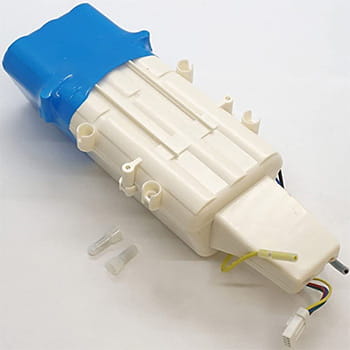
A dead battery may just be the reason why your Bissell CrossWave battery not charging.
The indicator lights on the CrossWave will tell you exactly when this happens when it glows a steady red light (refers to the bulleted list above).
Replacement batteries for CrossWave vacuums are difficult to find, especially the older models, but it’s not impossible. The difficult part is the actual process of replacing the battery.
Unfortunately, Bissell has made it pretty difficult to replace the battery at home. It’s not like other cordless vacuums like Dyson’s, which only need you to press a button to take out the old battery, slide in the new cell, then use it as normal. Instead, for the Bissell CrossWave, you have to remove a few screws and cut a few wires with pliers to remove the old cell. Then, you have to re-wire the new cell using electrical tapes to the vacuum.
It’s a lot of work, but with proper instructions, we don’t think it’ll be difficult for most people to do!
Bad Contacts Between the CrossWave and the Charging Station
Over time, your vacuum can get dirty, and the docking station, too. Dust, dirt, and gunks of all kinds can get stuck on the station. When this happens, your Bissell CrossWave not charging properly since the contacts on the vacuum don’t have a good connection with the contacts on the dock.
The fix is simple: just clean up your docking station. Wipe it down with a dry cloth, or use a soft-bristled brush to remove any accumulated dirt or dust.
The Unit or the Adapter Are Overheating
The Bissell CrossWave’s battery is large (it takes a lot of power to run the motor for 30 minutes). So, if you plug it in for a couple of hours, the vacuum and the charging station itself can become very hot to the point they overheat.
Bissell has integrated a sort of safety mechanism into both components. When they get too hot, the vacuum will automatically stop charging and shut down to protect itself. After all, if the battery becomes too hot, it may self-combust.
Overheating will happen more often if the place you store the vacuum and the charging station is hot. So, after you’ve waited for the vacuum to cool down and plug it in (and it still works), consider relocating both of them to a room with good ventilation and cooler temperatures.
Software/Firmware Error
The Bissell CrossWave comes loaded with a microcontroller with software and firmware to help manage the battery and working modes. The microcontroller or the software can run into errors, causing the vacuum to shut down or be unable to charge properly.
Typically, when this happens, the battery indicator will flash two red lights, indicating an “internal error” inside the vacuum.
As we explained earlier in the article, unfortunately, this error can’t be fixed on your own (unless you have hacking skill and can tap into the micro-chips of the CrossWave on your own … in that case, you probably don’t need this guide!) The only way to fix it is to contact Bissell and send it in for their technicians to inspect and repair it.
But when it has an internal error, there’s a good chance that nothing can be done to save the vacuum, and you’ll just have to buy a new unit (if the one you got is out of warranty.)
Things to Know While Fixing the Bissell CrossWave Won’t Charge Issue
Before you go ahead and troubleshoot the vacuum, take some precautions.
Use Only Original Parts and Components
There are a lot of third parties on the market that make spare and replacement parts for Bissell products. While many of them work well and can fit Bissell products perfectly, we highly recommend you search and buy original parts first and foremost before resorting to aftermarket parts. Because Bissell doesn’t make third-party components, they may not have the same quality control or follow stringent guidelines that Bissell has.
As a result, using third-party parts may run the risk of bricking your vacuum entirely or, worse, causing accidents like battery fire. A fire occurring due to low-quality batteries from third-party manufacturers has happened before.
So, buying and using original parts is for your own safety!
But that doesn’t mean third-party components are bad. Bissell CrossWave vacuums have been around for a long time, and there have been many discontinued models over the year. If Bissell no longer sells replacement parts, then buying from third parties may be your last option. But it’s still not recommended!
Never Use Damaged Batteries
If you need a battery replacement, never use one that seems to have been damaged (dents, scratches, nicks, etc.). The battery technology that the Bissell CrossWave uses (Lithium-ion) is extremely energetic and volatile. If the cells are damaged or punctured, they will cause a battery to fire or explode.
So, check the replacement battery carefully when it arrives at your doorstep for any damage during transit. If you find any suspicious signs, do not bring the battery into the house. Instead, put it back into the box and leave it somewhere safe, cool, and dry, like the garage.
Read the Instructions While Replacing the Battery
Make sure to follow all charging instructions while you’re replacing the battery of your CrossWave (it’ll come with the battery itself, or you can email Bissell for help.)
Keep the battery away from direct sunlight or anywhere hot. Lithium-ion cells will explode if they’re subjected to temperatures above 266°F (130°C).
➜ RELATED: Bissell Spot Clean Pro 3624 - An Excellent Portable Vacuum Cleaner For Carpet Spots And Stains
Conclusion
There are many potential explanations behind why your Bissell CrossWave isn’t charging properly, like a dead battery, a bad charger, or simply a case of overheating.
Go through the list above one by one until you find the reason why your Bissell CrossWave won’t charge. In case none of them apply for your vacuum, the last ditch effort is to send it off to Bissell to get it checked out by their technicians.
But before you do, don’t forget to check your warranty information! The power system (battery) is covered under warranty, and you may be eligible for a free battery replacement or an entirely new unit.
We hope this guide has been helpful to you! If you have any other questions, please feel free to send us an email. We're always happy to hear from you! We’ll get back to you as soon as we can!
FREQUENTLY ASKED QUESTIONS
- 01. How Long Does the Bissell CrossWave’s Battery Typically Last?
-
The Bissell CrossWave cordless vacuum comes with a 36-volt Lithium-ion battery that offers anywhere between 25 to 30 minutes of continuous cleaning. The longevity of the battery itself depends on many factors, but under normal use and conditions, it should last anywhere between 2 to 3 years before you notice a significant hit in run time.
Beyond 3 years, there’ll be a risk of the battery just dying unexpectedly. When that happens, you can replace the dead battery with a new one.

- 02. How Long Does It Take for the Bissell CrossWave to Charge?
-
For a vacuum that lasts only around 30 minutes, the Bissell CrossWave sure takes a long time to charge. In fact, it’s one of the few things that we dislike about it. When the battery’s drained down to 0%, it’ll take around 4 hours for the battery to be topped off again.
- 03. How to Read the Battery Indicator on the Bissell CrossWave?
-
On the handle of the Bissell CrossWave is a battery indicator. We’ve gone into detail about how it can help you diagnose battery problems of the CrossWave before by flashing red.
But for new users, reading the graph on the screen can be confusing.
So, it'll flash three white lights when the battery is charged up to (or near) full capacity between 70% to 100%. Between 40% and 69%, it’ll flash two white lights. And between 10% to 39%, just one light will remain.
Between 9% and 1%, when the battery is critically low, the indicator will flash one red light instead.








